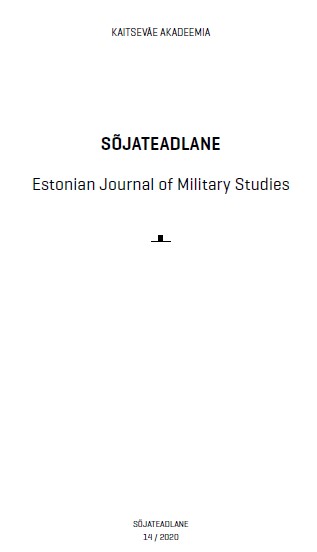SÕJALAEVA ELUTSÜKLIPÕHISE KULUMUDELI LOOMINE
WARSHIP LIFE-CYCLE COSTING MODEL
Author(s): Priit Sander, Marek Mardo, Kertu LÄÄTS, Jaan Murumets, Toomas HaldmaSubject(s): Security and defense, Military policy, Accounting - Business Administration
Published by: Kaitseväe Akadeemia (KVA)
Keywords: life-cycle costing; cost model; warship;
Summary/Abstract: Life-cycle costing provides decision-makers with a comprehensive overview of the costs of acquiring, maintaining and operating a warship. In addition, it allows for the assessment and comparison of the total costs of competing tenders before making the final selection. From 2017 to 2018, the Estonian Military Academy (EMA) carried out a research and development project in collaboration with the University of Tartu and the Estonian Navy with the aim of designing an evaluation model for the assessment of the costs of a warship across its entire life cycle. The main objective was to develop a practical instrument for decision-makers to help in their deliberations over whether to acquire a warship, and which capabilities should be installed. The model generated in the course of this research contributes to the careful consideration of a large-scale investment decision that must take into account the financial costs and expenditures accrued throughout the entire life cycle of the warship, i.e., from the moment of the decision to acquire the warship up to its eventual disposal. The financial aspects of our research are based on the theoretical frameworks of cost accounting, life cycle costing and the net present value principle. The resulting multi-period model is based on the net present value of future cash flows to account for the fact that the distribution of cash flows related to different decision alternatives varies considerably over time. Due to that, future cash flows are discounted at a rate that corresponds to their level of risk and the overall economic situation. The military-technical aspects of our research rely on the seven-phase warship life cycle used by NATO, and the Expanded Ship Work Breakdown Structure (ESWBS). For the purposes of analysis we identified the cost categories and cost elements across the entire life cycle (i.e., acquisition costs, operating and maintenance costs), and also analysed the main influencing factors. In addition, we ascertained the useful life-time of a generic warship, and calculated the corresponding discount rates. Finally, we developed a spreadsheet-based cost model, and prepared an accompanying user guidelines document.
Journal: Sõjateadlane
- Issue Year: 2020
- Issue No: 14
- Page Range: 94-116
- Page Count: 23
- Language: Estonian

